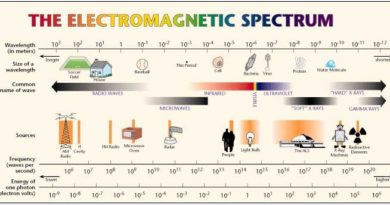Near and Far Fields of Antenna Radiation
Near and Far Fields of Antenna Radiation
The region surrounds the antenna can broadly classified into two fields: Near and Far fields. Near filed can again classified as Reactive near-filed and radiating near-field. Note that near-field describes the region directly around the antenna.

Reactive near-field
The region immediately surrounding the antenna is called reactive near-field. The reactive energy oscillate towards and away from the antenna. In this region energy is only stored and no energy is dissipated. The boundary for this region is given by:

Radiating Near-field (Fresnel region)
The region between the reactive near-field and the far-field is known as radiating near-field or FRESNEL region. In this region, angular field distribution is dependent upon the distance from the antenna. If the antenna has a maximum dimension that is not large compared to the wavelength, this region may not exist. The boundary for this region is given by following relation:

Within 4.1 ft, near filed will be there and beyond 4.1 feet, near field dominates. Note that field strength diminishes with distance but only the square of the distance.
- Most wireless applications use far field wave. Any antenna radiation patterns are valid only if measurements are taken on the far field.
- Mainly interested in the field far from the antenna (they are generally what we detect). This field is referred to as radiation field.
- The field patterns, associated with an antenna, change with distance and are associated with two types of energy: radiating energy and reactive energy. Hence, the space surrounding an antenna can be divided into two regions. Note that reactive field is not a radiating field.
- Near field of antenna is not used for any measurements. But applications such as RFID, NFC (Near Field Communication) make use of near field.
